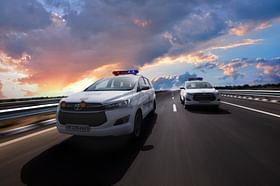Snapshot
-
Though a balance of civic sense has to come from the people as well, here are five problems that the government can address as low-hanging fruits, immediately.
The unfortunate death of Cyrus Mistry, and the miraculous escape of Rishabh Pant in the freak road accident, has again ignited the debate around the safety on highways and expressways in India.
While the government of the day must be credited for pursuing road infrastructure projects with great urgency, problems beyond the routine policymaking remain unaddressed.
In 2019, in 449,000 accidents, over 150,000 people lost their lives. In 2020, the number came down, given the pandemic lockdowns. In over 366,000 accidents, more than 131,000 people lost their lives.
While the government has embarked on several measures, from awareness to speed controls to curb the fatalities, but five major problems still ail Indian Highways.
One, trucks driving in the wrong lanes. Even on the best highways, like the one connecting Amritsar to New Delhi (Grand Trunk Road), trucks moving in the wrong lane is a huge menace. Either there are slow moving trucks in the fast lane, or fast moving trucks in any lane, also overtaking dangerously.
This results in accidental breaking by cars and even buses. Frequent lane changing is thus warranted that further adds to the threat on highways.
While experienced drivers have no problem navigating through the traffic, the routine traffic suffers. Even the state roadway buses are guilty of the same crime. No understanding of lanes altogether.
Two, in India, some roads that are inaugurated as highways or expressways soon turn into patchways. The phenomenon can be witnessed on the Yamuna Expressway, Grand Trunk Road, and even the Eastern Peripheral Expressway. While the cost of frequent tolls to the consumer can be debated, depleting road quality is as certain as it gets.
For instance, the Eastern Peripheral Expressway, on a bright sunny day, easily allows an experienced driver to touch 120 kmph (many exceed that threshold).
However, with the patchwork on concrete roads that were supposed to last at least a decade, there are cars hitting rough bumps, and in some cases even wobbling.
Three, the unending crossings on highways. While the government has done well to ensure elevated stretches around cities for national highways, many continue to have crossings that are used by the locals to skip the u-turns. Many of these locals, on two-wheelers, are often seen riding on the wrong side of the road, resulting in accidents.
The locals from the nearby villages use these crossings in the most uncivilised manner, barging in on the national highway with zero regard for the ongoing high-speed traffic, resulting in accidental breaking and collisions.
Many locals, walking, risk their lives and those of the commuters, as they cross road the highways on road, ignoring the overhead passes built.
Four, lack of bushes on the medians to curb the impact of high beam from the other side of the road. Especially on newly constructed expressways and highways, there are no bushes or trees to curb the light from the other side.
For any driver at more than 80 kmph, this is a problem. While the government can’t have bushes overnight, alternately, green boards can be installed.
Rishabh Pant’s accident also highlights the importance of having reflectors along the medians. For post-sunset driving on expressways and highways, especially in the Himalayan states, reflectors on medians and on the extreme end of the roads are indispensable.
Together, medians and reflectors are non-negotiables.
Five, stray cattle on expressways. While this problem has been curbed to a great extent, thanks to the local enforcement of the laws, there are farmers and cattle owners who get on to the highways.
There is nothing more threatening on a highway than stray cattle, and this is one problem the author has noted while driving in Punjab.
Recently, an accident was reported near Jalandhar, where an SUV went offroad while trying to dodge an animal. Two people were killed in that accident. While the law enforcement wants to hold the drivers responsible, it does not solve the larger problem, especially in the winter season, when there is a dense blanket of fog.
At the end of the day, the government can build impeccable roads, have them maintained in the best possible condition, better the construction quality in the long-term, but the civic sense has to come from the people themselves, be it truck drivers or amateur riders.
The above five problems, however, are low-hanging fruits which the government can address immediately.


